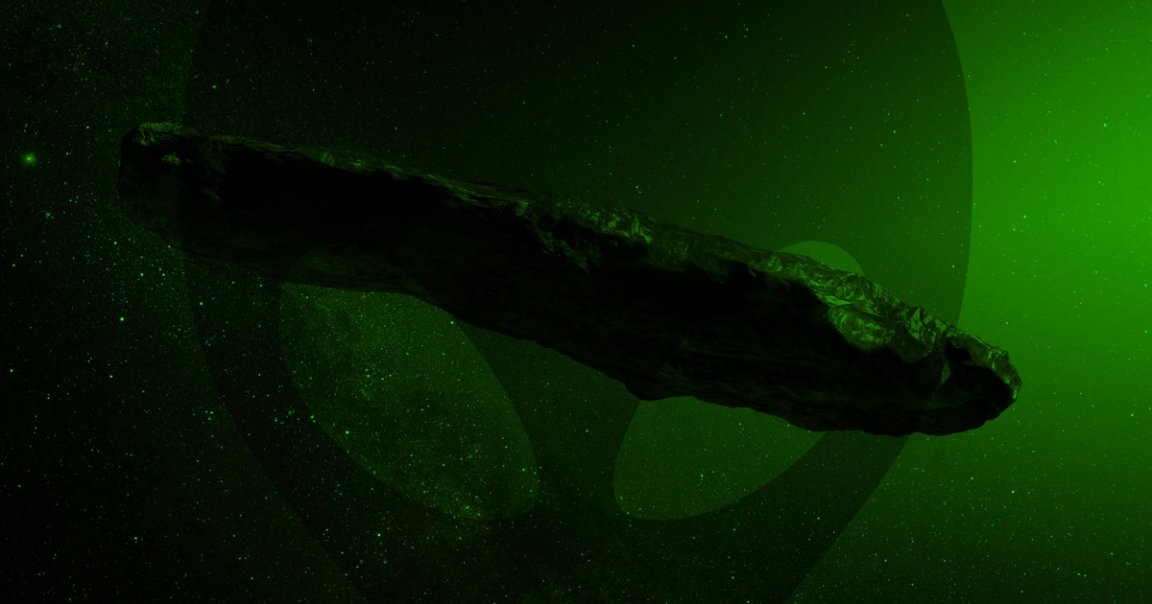
‘Oumuamua
In October 2017, astronomers were puzzled by the arrival of a strangely shaped object about 400 meters in length, which appeared to have entered our solar system at a highly unusual trajectory.
Experts concluded that ‘Oumuamua, as it was named later, was an interstellar visitor — kicking off years of speculation about whether or not it’s a piece of extraterrestrial technology, visiting from another star system.
The Hydrogen Hypothesis
Researchers pushing the alien probe hypothesis pointed out that the object appeared to be accelerating with no apparent explanation. But others argued that the acceleration was caused by solar radiation. Another suggested that hydrogen was emanating from it, making it a giant, hydrogen-fuelled iceberg.
Now, in a new study published last week in the Astrophysical Journal Letters, researchers Avi Loeb — Harvard University astrophysicist and strong supporter of the alien hypothesis — and Thiem Hoang from the Korea Astronomy and Space Science Institute, argue that it can’t be a massive lump of hydrogen after all.
In other words, as Live Science points out, there’s still a chance it’s alien tech.
Melting Snowman
Loeb and Hoang are responding to a June paper that suggested that ‘Oumuamua was a comet made up of molecular hydrogen. This hydrogen could be propelling the space rock along, a process that’s invisible from Earth.
But there are two big problems to this idea according to Loeb and Hoang: starlight would warm up small chunks of solid hydrogen just enough to stop them from gluing together like a snowman — how comets are usually formed.
They also argue that traveling all the way here from a distant “giant molecular cloud” over hundreds of millions of years would surely make it fall apart, like a snowman in the spring.
READ MORE: Interstellar visitor ‘Oumuamua could still be alien technology, new study hints [Live Science]
More on ‘Oumuamua: Interstellar Visitor May Be One of Rarest Objects In Universe